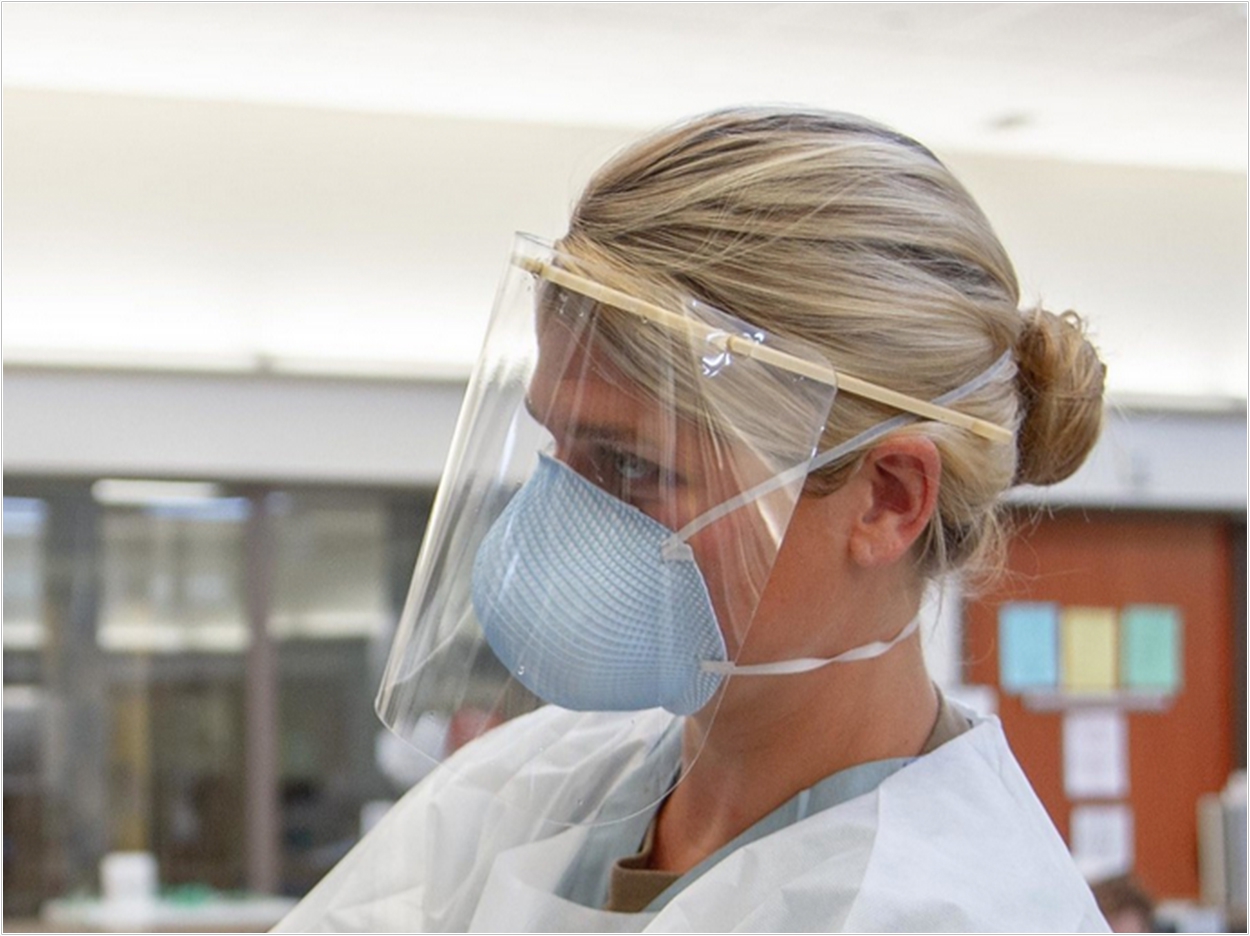
A combination of moderate heat and high relative humidity can be used to disinfect N95 mask materials without hampering their ability to filter out viruses, enabling them to be reused, according to the Department of Energy’s SLAC National Accelerator Laboratory, Stanford University, and the University of Texas Medical Branch.
The researchers also believe that it shouldn’t be too difficult to turn their results into an automated system that hospitals could use in short order, with just a few months necessary to design and test a device.
“This is really an issue, so if you can find a way to recycle the masks a few dozen times, the shortage goes way down,” said Stanford physicist Steven Chu, PhD, senior author of the study and William R. Kenan Jr Professor of Physics and professor of molecular and cellular physiology at Stanford University.
“You can image each doctor or nurse having their own personal collection of up to a dozen masks. The ability to decontaminate several of these masks while they are having a coffee break will lessen the chance that masks contaminated with COVID viruses would expose other patients,” Chu said.
Facing a mask shortage earlier this year, the researchers considered various ways to disinfect them for use, including ultraviolet light, hydrogen peroxide vapors, autoclaves, and chemical disinfectants. The problem is that many of these methods degrade N95 masks’ filtering abilities, so at most they could only be reused a few times, the researchers said.
Working at the World Reference Center for Emerging Viruses and Arboviruses, which has biosafety measures in place for working with the most contagious viruses, the researchers first mixed up batches of SARS-CoV-2 in liquids designed to mimic the fluids that might spray out when people cough, sneeze, sing, or simply breathe.
Next, the researchers sprayed droplets on a piece of meltblown fabric, a material used in most N95 masks, and let it dry. Finally, they heated their samples at temperatures ranging from 25°C to 95°C for up to 30 minutes with relative humidity up to 100%.
Higher humidity and heat substantially reduced the amount of virus the team could detect on the mask, although they had to be careful not to go too hot, which additional tests revealed could lower the material’s ability to filter out virus-carrying droplets. The sweet spot appeared to be 85°C with 100% relative humidity, which left the masks with no trace of SARS-CoV-2.
Additional results indicate that masks could be decontaminated and reused upwards of 20 times and that the process works on at least two other viruses, including a human coronavirus that causes the common cold and the chikungunya virus.
The results are not especially surprising, the researchers said, as heat and humidity have been known to be good methods for inactivating viruses for a long time. Also, there hadn’t been an urgent need for a detailed, quantitative analysis of something like mask decontamination until now.
The new data “provide some quantitative guidance for the future,” said Scott Weaver, MS, PhD, John Sealy Distinguished University Chair in Human Infections and Immunity and chair of the Department of Microbiology and Immunology at the University of Texas Medical Branch.
Even after the coronavirus pandemic ends, there likely will be benefits in part because of the method’s application beyond SARS-CoV-2 to other viruses and because of the economic and environmental benefits of reusing masks, the researchers said.
“It’s good all around,” said Yi Cui, PhD, a professor of materials science and engineering at Stanford and SLAC.
The study, “Decontamination of SARS-CoV-2 and Other RNA Viruses from N95 Level Meltblown Polypropylene Fabric Using Heat Under Different Humidities,” was published by ACS Nano.
Related Articles
UV-C Light Effectively Kills COVID-19 Virus on N95s
OSHA Fines Massachusetts Practice for COVID-19 Safety Violations
Face Shields and Masks With Valves Aren’t Effective at Stopping COVID-19


